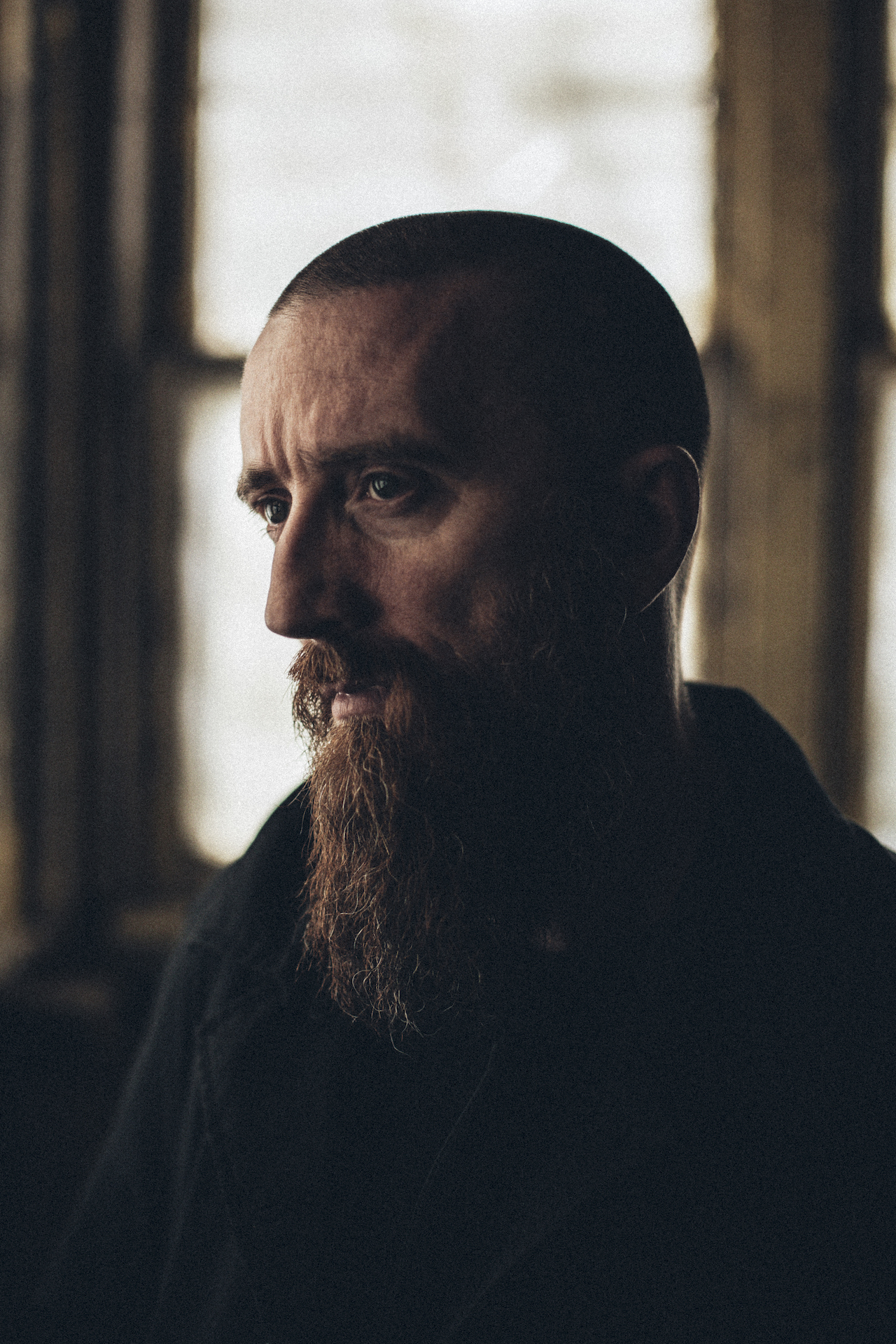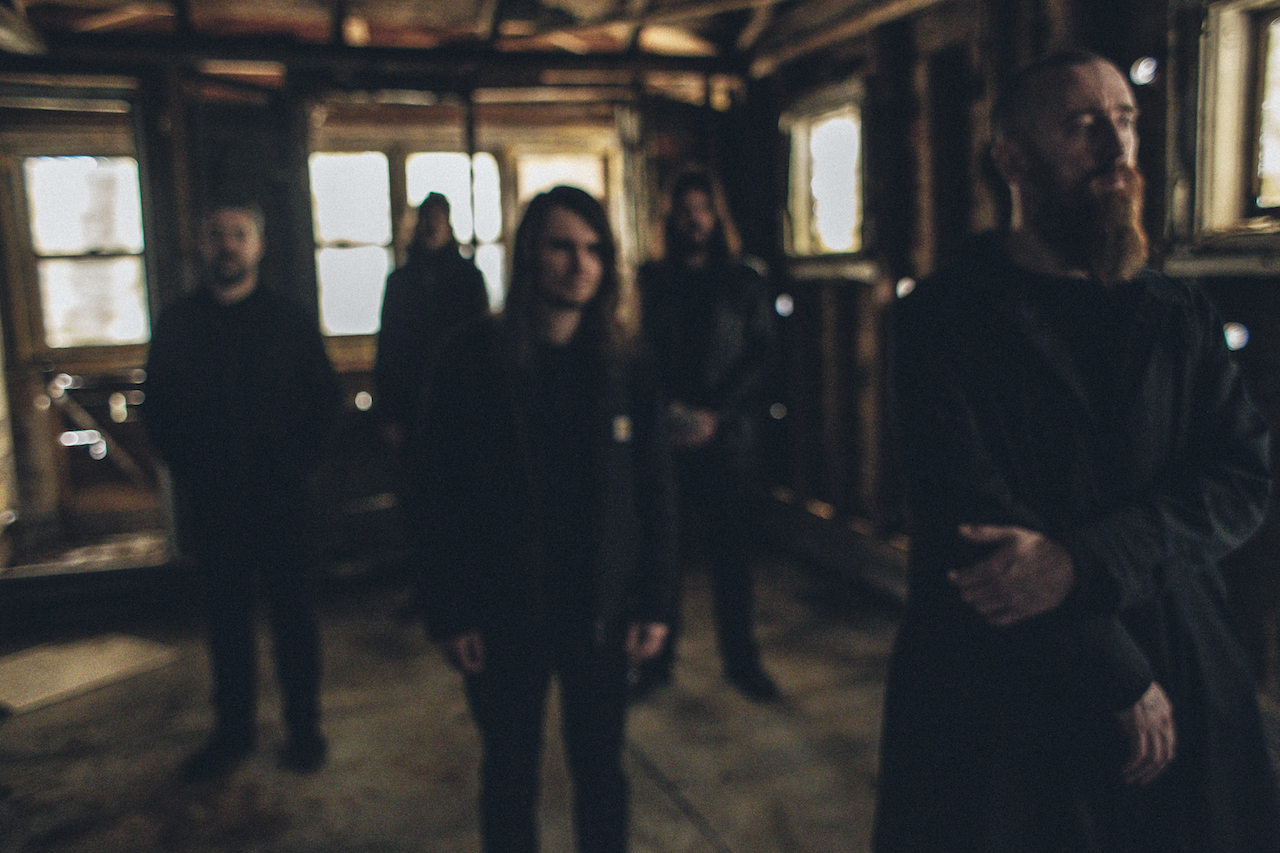During the first World War, the Belgian city of Diksmuide in West Flanders was reduced to ruins after a series of attacks and bombings. Many people there had already lost fathers and sons to the war, and now they had to rebuild their homes and their lives – to find the strength to keep going.
In 2018, a special event was held in Diksmuide to mark the centenary of the war ending. The artistic spectacle was held in the market square of the city, and included Swiss-German dancer Imre Thormann and a live performance by Belgian five-piece Amenra. It was the beginning of the band’s journey towards what would become their new, seventh album, De Doorn.
“We were contacted by the city and asked [to participate],” explains Amenra frontman Colin H Van Eeckhout. “I think we are seen as the kind of band they could ask; we have this certain weight, seriousness.”
Since forming 22 years ago, Amenra’s searing post-metal has been centred on finding hope in times of desperation – just as the people of Diksmuide had to do all those years ago. The band’s intense live performances are like a vessel for turning collective pain into cathartic release; you always leave feeling as though a weight has been lifted. As Colin says, “A typical thing with Amenra is saying goodbye, embracing what is happening, and finding a way to carry on.”

The WWI centenary was the first of three spectacular, ceremonial events in Belgium between 2018 and 2019 for which Amenra wrote new songs; following Diksmuide, they took part in two separate fire rituals in nearby cities Ghent and Menen. Amenra have always aimed to be more than “just a band”, but these shows took them to another level. “They gave us the opportunity to do something bigger,” says Colin.
“I’m the kind of human that sees [rituals] as being powerful, precious and necessary,” he explains. “Some people don’t need it, and that’s cool. But I do think that some can draw energy, inspiration and positivity from these moments. They bring people together, and there’s not enough of that. What brings people together these days? Entertainment. A festival, a concert. Which is beautiful, but doesn’t have a very profound impact. We still have funerals, births of children, marriage, but in my opinion they sometimes lose their power of effect. It’s about giving worth back to those moments.”
The second event, in Ghent, was created alongside an organisation called Beyond The Spoken, which develops rituals for people to come to terms with death and grief. For this ritual, the people of Ghent were invited to place notes detailing their own unacknowledged losses inside wooden structures made by Indonesian artist Toni Kanwa Adikusumah, which were then burned in a ceremony while Amenra performed.
“It’s something that is kept inside a person,” Colin says, when asked what is meant by ‘unacknowledged loss’. “Like maybe someone who wants to become a mother, but something doesn’t work physically. Or maybe someone you love had an accident and got hurt. Or it could be something like having to move, or your pet dying. Things that don’t really get a place inside our modern society – the cross you have to carry on your own.”
The final event marked Amenra’s 20th anniversary and took place in Menen, Belgium, in October 2019 – Hammer attended and reported on it. It was a ritual in collaboration with Belgian sculptor Johan Tahon, who created a statue that was placed inside a huge bonfire, and was revealed from the flames as Amenra performed.
These events were intense for Amenra – Colin notes how logistically it was “crazy” diving from one to another. But they were also incredibly rewarding. And once the celebration in Menen concluded, Amenra realised they had written enough new music for a whole album.
Up until now, all Amenra’s albums have been given the title ‘Mass’ – Mass I, II, III, etc. They usually addressed specific things in the bandmembers’ lives, such as their children becoming seriously ill, or their parents passing away. “Our other albums were kind of a direct result of personal trauma,” says Colin, who writes the lyrics. “They have a sense of attacking the things that put a weight on our shoulders, addressing this invisible enemy.”
But these new songs were written for a different purpose, and from a new angle: looking outwards, rather than from within. “These songs were written for people who were experiencing and witnessing the situations at hand,” Colin continues. “It wasn’t about us. So I was addressing the fires, and addressing the people – embracing what is happening, taking people by the hand, and leading them with us. It was more like a group thing.”
Because of this, they gave the album a new title: De Doorn, which translates to ‘The Thorn’. “Recently I grew obsessed with thorns, because I like the idea that it was a nature-made weapon, to protect its owner,” Colin explains. “A rose protects its beauty with thorns, a bush protects its seed or fruit. I transposed the idea onto humans – that we all develop our own thorns to protect ourselves, and we also carry wounds that have been inflicted by other people’s thorns.”
Colin is quick to clarify that it isn’t a religious reference, like Jesus’s crown of thorns. “People have asked that,” he says, “but it’s not really the case.”
De Doorn is the first Amenra album sung entirely in Flemish. “Most of the songs were written for local situations,” Colin says, “so I knew that 90% of the people there would be Flemish speaking. It made the most sense to work in that language. I was drawn to it already from the last album, Mass VI, that has some Flemish poems in between songs, and we had played Flemish cover songs. The potential of our own language started to be clear, and I instinctively wrote more in Flemish than in English.”
Writing in his native language, Colin experimented with wordplay, using similar-sounding words with contrasting meanings such as ‘Hart Slag’ and ‘Slag Veld’ (‘heartbeat’ and ‘battlefield’) and ‘Vrede’ and ‘Wrede’ (‘peace’ and ‘cruel’). “I felt I had a lot more potential at my hands, becauseI knew that language and felt I could do it better in a way – more in-depth and more layered,” he says.
Colin’s lyrics are abstract, more like poetry, with imagery relating to war, families losing loved ones, and finding hope in the ashes of destruction. During their performance in Diksmuide, images of Syrian refugees were shown alongside archive footage of Belgian refugees from WWI, and Colin’s lyrics for these songs – Ogentroost and Voor Immer – refer to families being torn apart.
The finished album features vocals from Caro Tanghe of Oathbreaker, which add a stunning dynamic to the music: “I like to have the male and female voices – it feels like there’s more balance,” Colin says. And with De Doorn so deeply rooted in specific localities, it comes as no surprise that Amenra also took some inspiration from a Belgian wave of music: Kleinkunst, a 60s/70s folk music movement that finds beauty in the simplicity of everyday life.
“They have this poetic way of telling normal stories,” Colin says. “What we did on De Doorn made me think about that. It’s about situations here in Belgium, and it’s like storytelling. If I had to look for something comparable internationally, I’d compare it to the bluesy type of music like Townes Van Zandt did in the US. Nothing glorified, nothing romantic: they say it as it is.”
With De Doorn, Amenra capture the profound, shared experiences of a whole community. “It gives you a sense of fulfilment, a purpose,” Colin says of the rituals. “You feel like you’re contributing something that can help someone. Maybe it’s because I’m a social worker at heart,” he says, referring to his previous job. “I don’t actively do that profession anymore, but I have the impression that I am still doing it now.”
Published in Metal Hammer #350. De Doorn is out now via Relapse.

